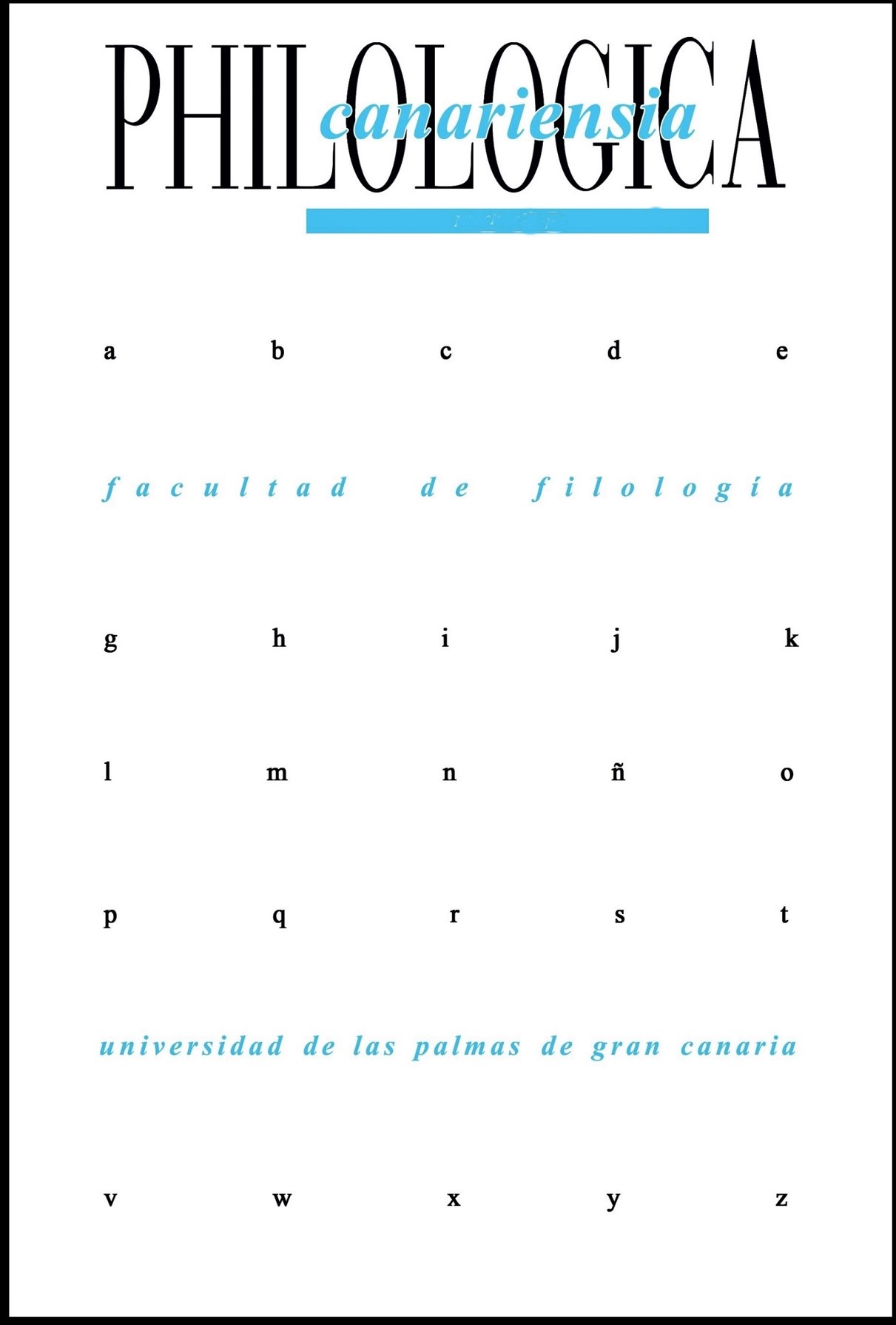Men, Women, and Reggaeton: A Pragmalinguistic Approach
DOI:
https://doi.org/10.20420/Phil.Can.2024.674Keywords:
woman, male discourse, reggaeton, Pragmatics, enunciationAbstract
This paper focuses on how male reggaeton singers depict women in their songs. Our aim is to find out the features of this depiction and, on the other hand, to compare our results with the results obtained in a previous work of songs of female singers. To make it possible, the pragmatic perspective is adopted as methodological model to identify which linguistic units are the accurate ones to explain our topic. Thus, the analysis of the most popular male singers in Spain between 2018 and 2021 has revealed that personal pronouns and possessives are the units that indicate how is the conception of the women and the relationship between locutors and allocutaries displayed in the songs. The latter allow us to conclude that, although women and men share some constituents of that musical genre, each one has also different ways to practice it.
Downloads
References
BRENES PEÑA, E. (2021). Mujeres directivas: estrategias argumentativas y actividades de gestión de la imagen social. Círculo de Lingüística Aplicada al Español, 86, 95-112. https://doi.org/10.5209/clac.74077.
CARAZO ANGULO, L. E. (2012). Dale mi loba que tú eres la killa: Marcas valorativas de la imagen femenina en el reggaetón.
CARBALLO VILLAGRA, P. (2006). Reggaetón e identidad masculina. Cuadernos Intercambio sobre Centroamérica y el Caribe, 3(4), 87-101. https://www.redalyc.org/articulo.oa?id=476948766005.
CARBALLO VILLAGRA, P. (2010). ¿De dónde viene el perreo? Los orígenes del reguetón y sus productores de discurso. Cuadernos Americanos: Nueva época, 4(134), 179-194. https://rilzea.cialc.unam.mx/jspui/bitstream/CIALC-UNAM/A_CA311/1/CA_134_9.pdf.
DOMÍNGUEZ CHENGUAYEN, F. J. (2020). La imagen de la mujer en el género musical del reguetón: discurso, cognición y representación. Tierra Nuestra, 14(1), 68-75. https://doi.org/10.21704/rtn.v14i1.1504.
DUCROT, O. (1984). El decir y lo dicho: Polifonía de la enunciación (S. Vassallo, trad.). Librería Hachette.
ESCOBAR-FUENTES, S. (2022). Sexismo y relaciones de género en la música popular contemporánea: reggaetón y grandes éxitos [Tesis doctoral, Universidad de Málaga].
FUENTES RODRÍGUEZ, C. (2015). Lingüística pragmática y Análisis del discurso (2.ª ed.). Arco Libros.
GALLUCI, M. J. (2008). Análisis de la imagen de la mujer en el discurso del reggaeton. Opción, 24(55), 84-100. https://www.redalyc.org/articulo.oa?id=31005506.
GARCÉS MARTÍNEZ, A. M. (2014-2015). Imagen de mujer construida por los artistas del género reguetón (Luigi 21 Plus y Tony Dize) a partir del análisis del discurso realizado en dos letras de sus canciones [Trabajo de Grado, Gimnasio La Colina].
GARCÍA PÉREZ, J. (2022). Hacia una delimitación de la construcción discursiva de la mujer en las cantantes de reguetón. En C. Fuentes Rodríguez, E. Brenes Peña y C. Prestigiacomo (eds.), Estrategias comunicativas, proyección de imagen y género (pp. 273-298). Palermo University.
MARS, A. (2021, 3 de enero). Enfocando a Bad Bunny [entrevista]. El País. 43 párrs. https://elpais.com/elpais/2020/12/30/eps/1609327975_051296.html.
MERLYN, M.-F. (2020). Dime lo que escuchas y te diré quién eres. Representaciones de la mujer en las 100 canciones de reggaetón más populares en 2018. Feminismo/s, 35, 291-320. https://doi.org/10.14198/fem.2020.35.1.
MUÑOZ ÑAÑEZ, T. E. (2010). El musicar de la salsa, el rap y el reggaeton en las identidades de los jóvenes afros del norte del cauca [Trabajo de Maestría, Universidad de Manizales]. CORE. https://core.ac.uk/download/pdf/35215818.pdf.
PONTRANDOLFO, G. (2020). De tu cuerpo me hago dueño / Tú eres el mío y yo soy tu sueño. La construcción discursiva de la mujer en las letras de Maluma: un análisis crítico del discurso asistido por corpus. Discurso & Sociedad, 14(4), 930-969. http://www.dissoc.org/es/ediciones/v14n04/DS14(4)Pontrandolfo.pdf.
RAE – ASALE (2010), Nueva Gramática de la lengua española. Manual. Espasa-Calpe.
RAMÍREZ NOREÑA, V. K. (2012). El concepto de mujer en el reggaetón: análisis lingüístico. Lingüística y Literatura, (62), 227-243. https://doi.org/10.17533/udea.lyl.14533.
RIVERA, M. (2016). Pal Mundo: el mundo académico ante el reguetón de los noventas pa’ acá. En V. Nadal-Ramos y D. Smith Silva (eds.), Perspectives on reggaeton (pp. 18-25). University of Puerto Rico, Río Piedras Campus.
RIVERA, R. Z., y NEGRÓN-MUNTANER, F. (2009). Nación Reggaetón. Nueva Sociedad, (223), 29-38. https://static.nuso.org/media/articles/downloads/3630_1.pdf.
ROSA NAPAL, F. C., y ROMERO TABEAYO, I. (2021). Las células rítmicas como recurso para la comprensión intercultural de la música. Sinfonía virtual. Revista de Música y Reflexión Musical, 41, 1-15. https://www.sinfoniavirtual.com/revista/041/celulas_ritmicas.pdf.
URDANETA GARCÍA, M. (2010). El reggaetón, invitación al sexo. Análisis lingüístico. Temas de Comunicación, (20), 141-160.
WOOD, A. E. (2009). El reguetón: Análisis del léxico de la música de los reguetoneros puertorriqueños [Trabajo Fin de Máster, Georgia State University]. ScholarWorks. https://scholarworks.gsu.edu/cgi/viewcontent.cgi?article=1005&context=mcl_theses.
Published
How to Cite
Issue
Section
License
Copyright (c) 2023 José García P´érez

This work is licensed under a Creative Commons Attribution-NonCommercial-NoDerivatives 4.0 International License.
![]()
Philologica Canariensia is distributed under the terms of the Creative Commons Attribution–NonCommercial–NoDerivatives 4.0 Internacional.
Philologica Canariensia allows authors to retain unrestricted copyright and to retain it in the future.
The author is allowed to deposit the publisher's PDF version on his or her personal website, in an institutional or subject repository or in an social network. Authors who publish with this journal agree to the following terms:
a. Authors retain copyright and grant the journal right of first publication with the work simultaneously licensed under a Creative Commons Attribution License that allows others to share the work with an acknowledgement of the work's authorship and initial publication in this journal.
b. Authors are able to enter into separate, additional contractual arrangements for the non-exclusive distribution of the journal's published version of the work (e.g., post it to an institutional repository or publish it in a book), with an acknowledgement of its initial publication in this journal.
c. Authors are permitted and encouraged to post their work online (e.g., in institutional repositories or on their website), as it can lead to greater citation of published work (See The Effect of Open Access).



1.png)

1.png)



